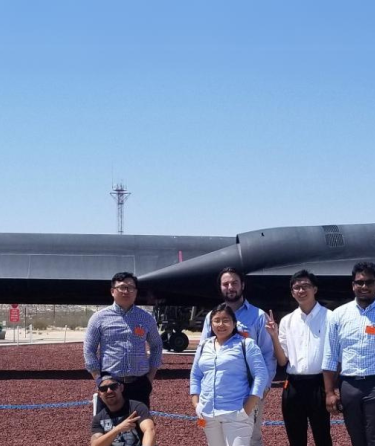Engineering
We offer a core engineering program to facilitate transfer into Engineering majors at UC/CSUs. In addition, we provide undergraduate research opportunities to allow engineering students to gain hands-on engineering skills through our partnerships with NASA-California Space Grant Consortium and our Engineering Fabrication Laboratory.
Engineering AS Degree
The Engineering Associate of Science degree consists of the math, physics, chemistry, and engineering courses that are typically required to fulfill lower division requirements for transfer as Mechanical, Civil, Electrical, or Computer Engineering majors at four-year colleges. Students should have completed precalculus level math to begin the sequence of math and physics courses that comprise this degree; ENG GEN 101 and ENG GEN 121 have no math prerequisites and hence should be taken early. Students undertaking this program of study are advised to meet with a counselor to develop an optimal educational plan to ensure completion of this high-unit degree within a reasonable time period.
Our Courses
Students learn about the engineering method and strategies for academic and career success in engineering. Students are introduced to mechanical, civil, electrical, and computer systems engineering through project work. The vast range of disciplines and opportunities in engineering are presented. Students are guided through challenging design exercises to develop skills in planning, communication, team working, and creativity. Only basic mathematics skills are required.
In this introductory course students will learn the fundamentals of technical drawing and an introduction to computer-aided design (CAD) with a focus on mechanical applications. Topics include the development of visualization and technical sketching skills in conjunction with orthographic projections; dimensioning and tolerancing practices, including a brief introduction to geometric dimensioning and tolerancing (GD&T); and reverse engineering. Lab work includes hand sketching and the use of two and three-dimensional CAD software.
The student learns how to apply vector analysis of forces and moments to determine the equilibrium conditions in trusses, frames, and machines. The course also covers center of mass, centroids, friction, and moment of inertia.
The student learns how the properties of materials are related to atomic and crystal structure and how processing influences structure and hence properties. Topics include atomic structure and bonding, crystalline structures, phases and phase diagrams, metals, polymers, ceramics, composites, mechanical deformation, fracture, and electrical and magnetic properties.
Students learn the theory of circuit analysis and practice its application to areas of importance in electrical engineering such as DC, AC, operational amplifiers, multi-phase power, and frequency response. Students also perform laboratory exercises to learn how to realize circuit designs using electronic components and to use instruments such as multimeters, oscilloscopes, and signal generators.
Students learn the fundamentals of the ‘C’ computer programming language through completing hands-on projects involving sensors, motors, and displays. Students also learn how to interface hard ware to a desktop computer or laptop. The course provides transfer preparation in computer programming for science and engineering majors.
Physics & Engineering Department
Location
We are located in the Sciences Building 222D.
